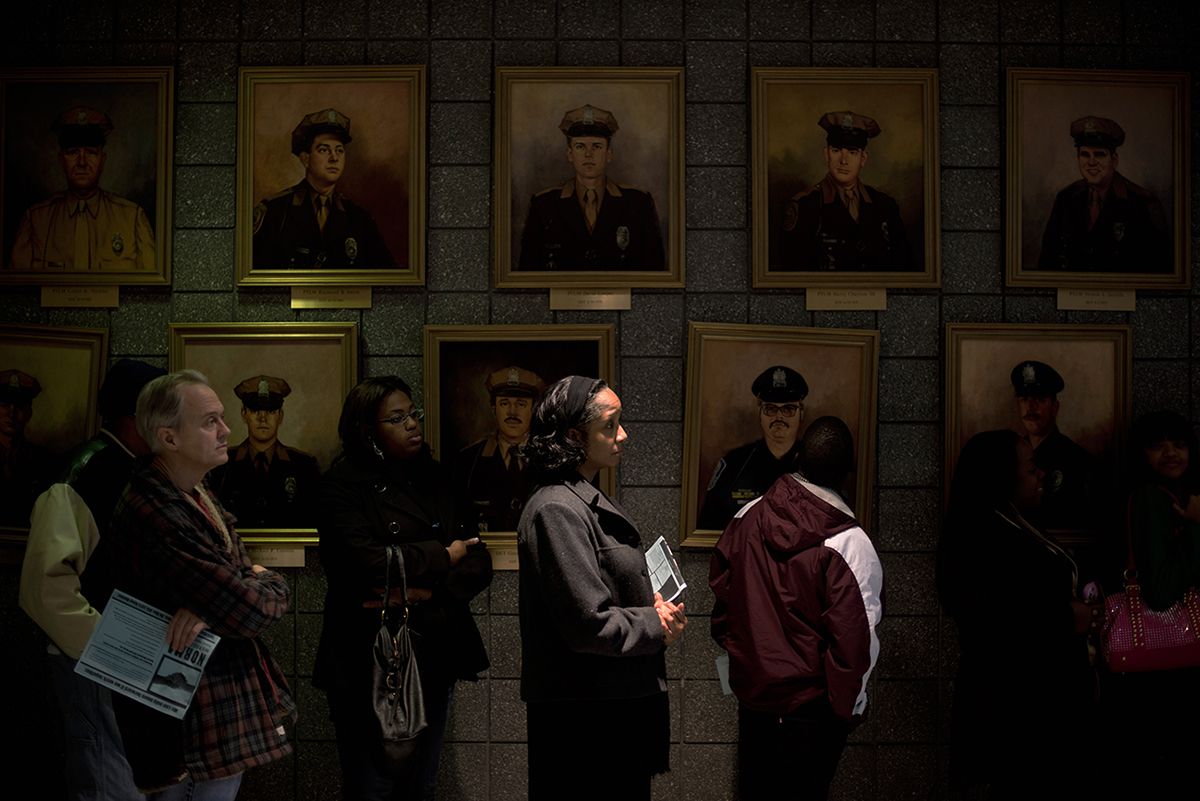Introduction
Our Democracy is award-winning photojournalist Andrea Bruce’s collaborative multimedia project about how Americans see democracy and the responsibility of citizenship. It's meant to “push people to look beyond politics and examine the social conditions that underpin our society and provide a visual record of the state of local democracy at this moment in US history.”
Over the next two years, Bruce will travel across the United States documenting everyday experiences of democracy. Her photography will be featured in a forthcoming issue of National Geographic Magazine.
Bruce invites students to join her exploration of democracy and is exploring ways to feature their citizen journalism alongside her work online. The following projects have been designed to guide classrooms through an Our Democracy reporting experience.
Here is a PDF of this unit:
Projects
Project 1: Contribute to the Our Democracy Instagram Feed
Students will use photography to answer the question “What does democracy look like?” First, they will examine the question in their own lives. Then, they will venture out and canvass their neighborhoods to learn about local democratic issues that impact their communities and practice interview skills along the way. Students will capture what they learn in photographs and photo captions for the Our Democracy Instagram Feed, curated by photographer Andrea Bruce.
Part 1: Personal Photography
Through photography, students will consider what democracy looks like in their own lives and homes. They will take 3 photographs: one photograph of a person/group, another of a place, and finally a photograph of an object. Each photograph must answer the question, “What does democracy look like in my personal life?” Students will write captions about each photograph.
Part 2: Neighborhood Photography
Students will take their exploration of democracy beyond the walls of their homes and classrooms and conduct man-on-the-street interviews. They will ask residents what local democratic issues most matter to them and report what they learn in photographs and captions for the Our Democracy Instagram Feed. Like the assignment in Part 1, they will photograph a person/group, place, and object that represents an issue or idea about local democracy.
Students and teachers should directly message photos and captions from Parts 1 and 2 of Project 1 to Andrea Bruce @OurDemocracy on Instagram.
Project 2: Film a Professional Instagram Story for Our Democracy
In Our Democracy’s digital take on the five-paragraph essay, students will learn the basic components and structure of a journalistic story. They will practice reporting and create a short, local story about a democratic issue using a social media platform by following these steps:
1. Teachers will select a democratic theme or issue with special relevance to their community. The issue and topics related to it should be easy for students to visualize and report out in their neighborhood. One of the goals for this module is to help students learn how to focus a larger issue into a subtopic and finally into a local story. This scaffolding will help them succeed in the next project module.
2. The class will brainstorm topics related to the teacher-selected local democracy issue, and each student will select a specific subtopic of the issue they want to explore more closely.
3. Students will research and plan what they want to report in their Instagram Story.
4. After planning production, students will film in their neighborhood, interview subjects, and edit their Instagram Stories. Each story can be told in 5 clips. For example:
- Clip 1 – Establishing shot featuring story headline and student name
- Clip 2 – Story news peg or hook lead
- Clip 3 – A key fact / recent event / opinion related to the story
- Clip 4 – Interview clip featuring a sound bite that supports clips 2 and 3
- Clip 5 – Conclusion (facts moving story forward or providing a closed ending)
5. Students will send their stories to their teacher. Teachers can select the best stories and forward them to Andrea @OurDemocracy.
Project 3: Produce a Multimedia, Citizen Journalism Story on Local Democracy (Unit Capstone)
For this capstone project, students will work in teams to produce a reporting project that presents the story of a local democratic issue through writing, data journalism, and multimedia footage. As the capstone, this project will give students the opportunity to apply all the reporting skills they practiced in the first two modules of the unit towards a local story they care about. Through the incorporation of data journalism, the project is also an opportunity to integrate skills students learn in their STEM courses.
Teachers can model deliverables on the following two Pulitzer Center projects, which also feature the three types of journalism (written, data, and multimedia) that student teams will be required to produce:
Breathtaking by Larry C. Price et al
The 21st Century Gold Rush by Malia Politzer and Emily Kassie
Unit Finale: Our Democracy Day, a School-Wide Democracy Discussion
- Teachers are encouraged to organize a school-wide event during which their students can share their capstone journalism projects to incite conversations about democracy in their schools.
- Classrooms can view and respond to a video discussion featuring Andrea's conversation about democracy with a group of formerly incarcerated men and women in Memphis, Tennessee. A lesson plan for this video has also been created.
